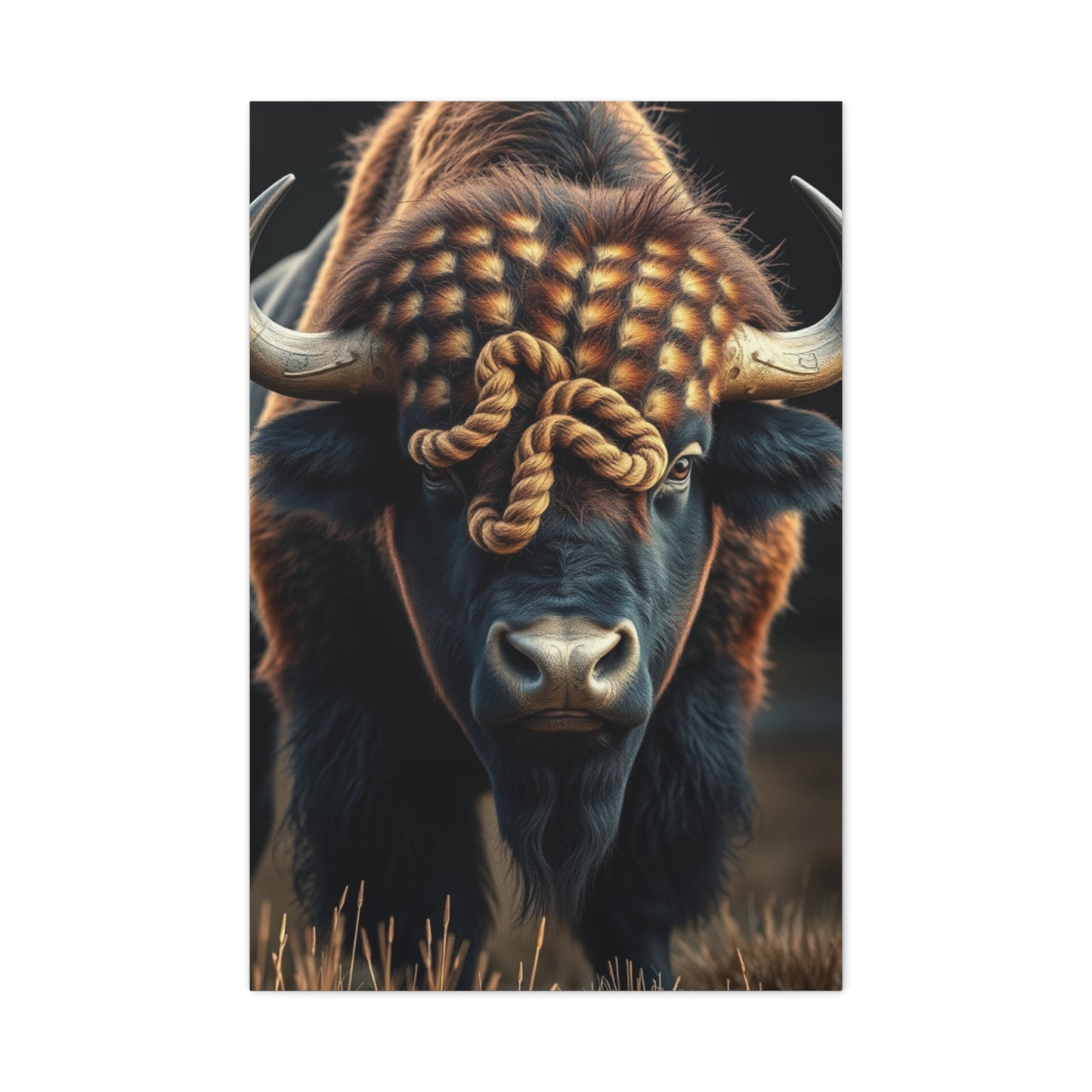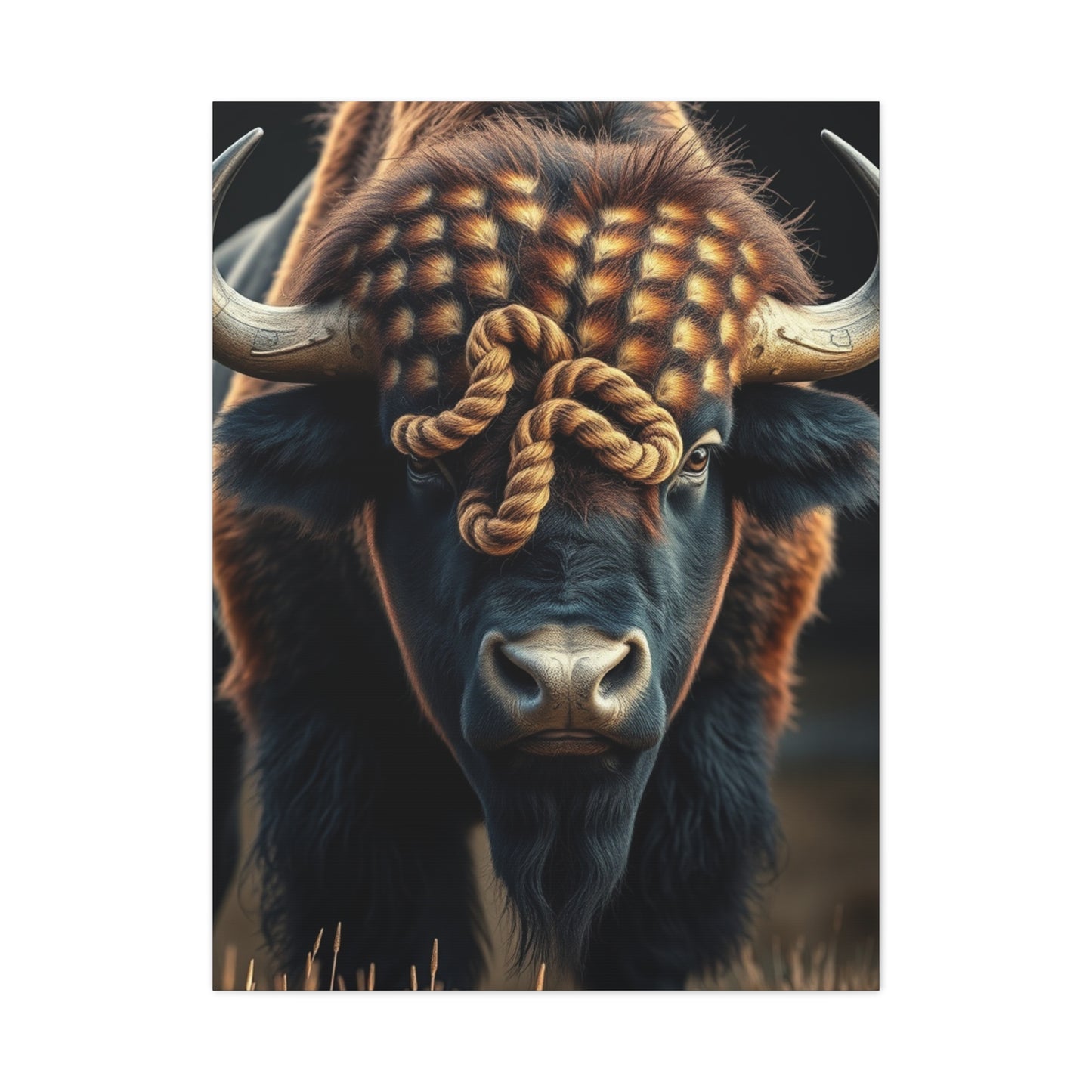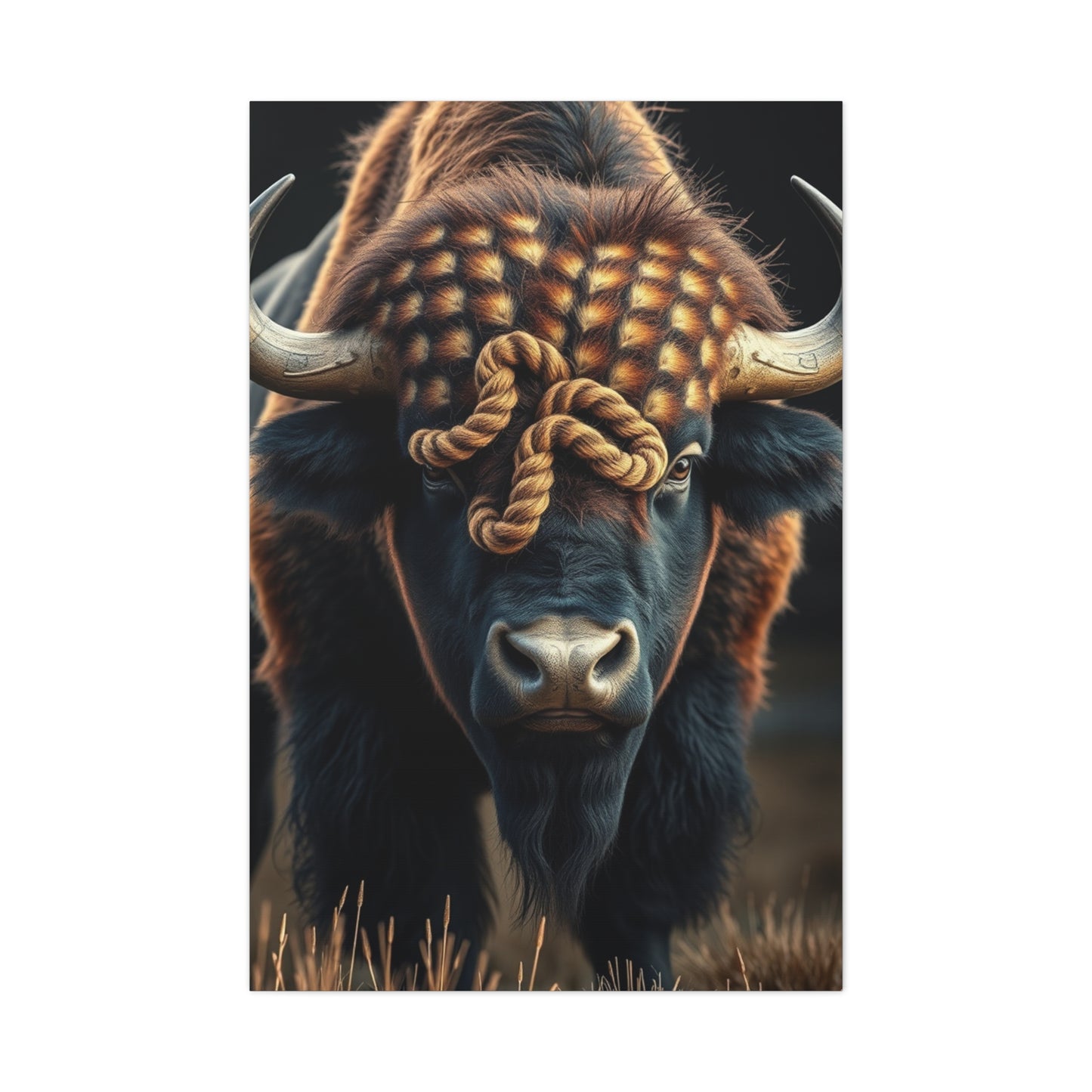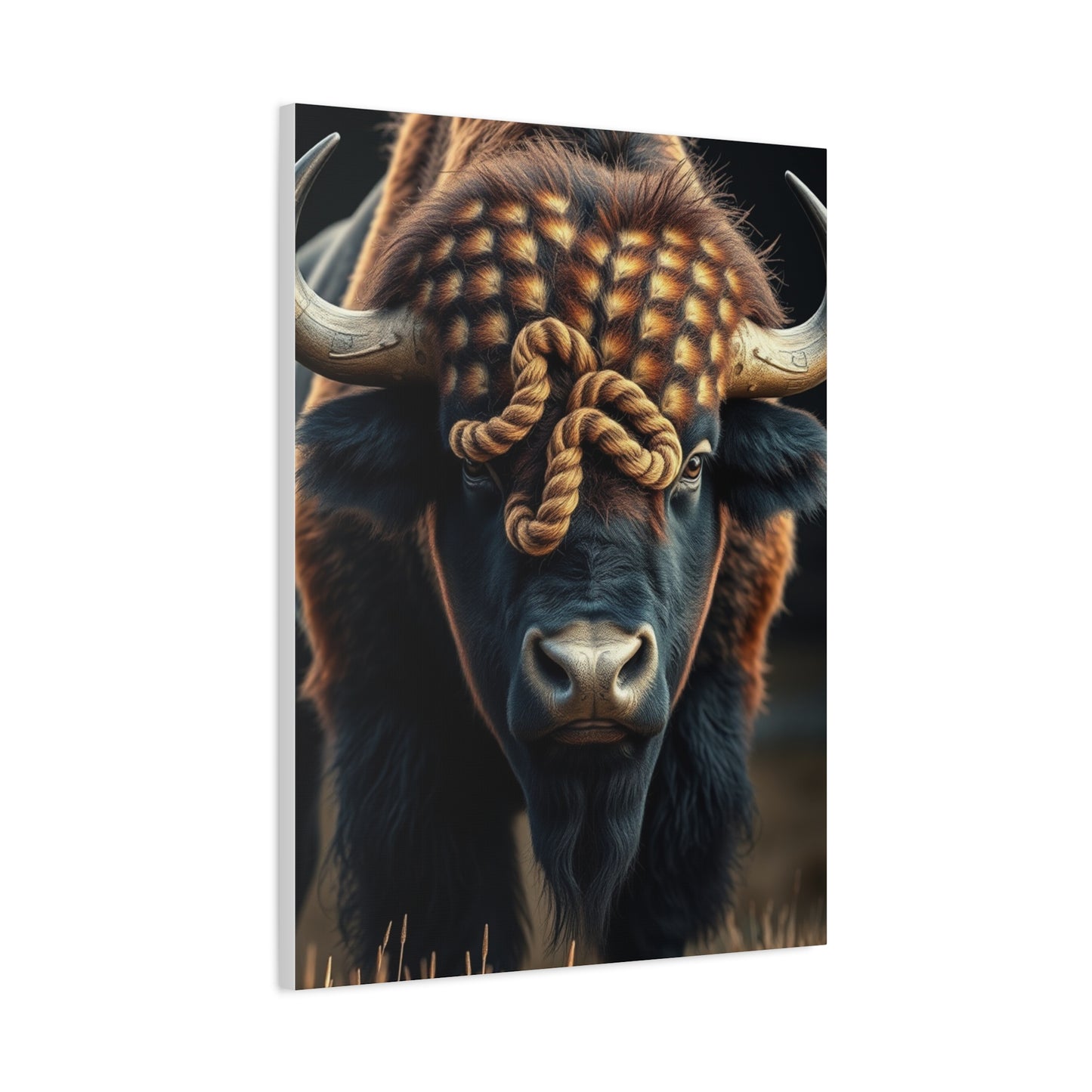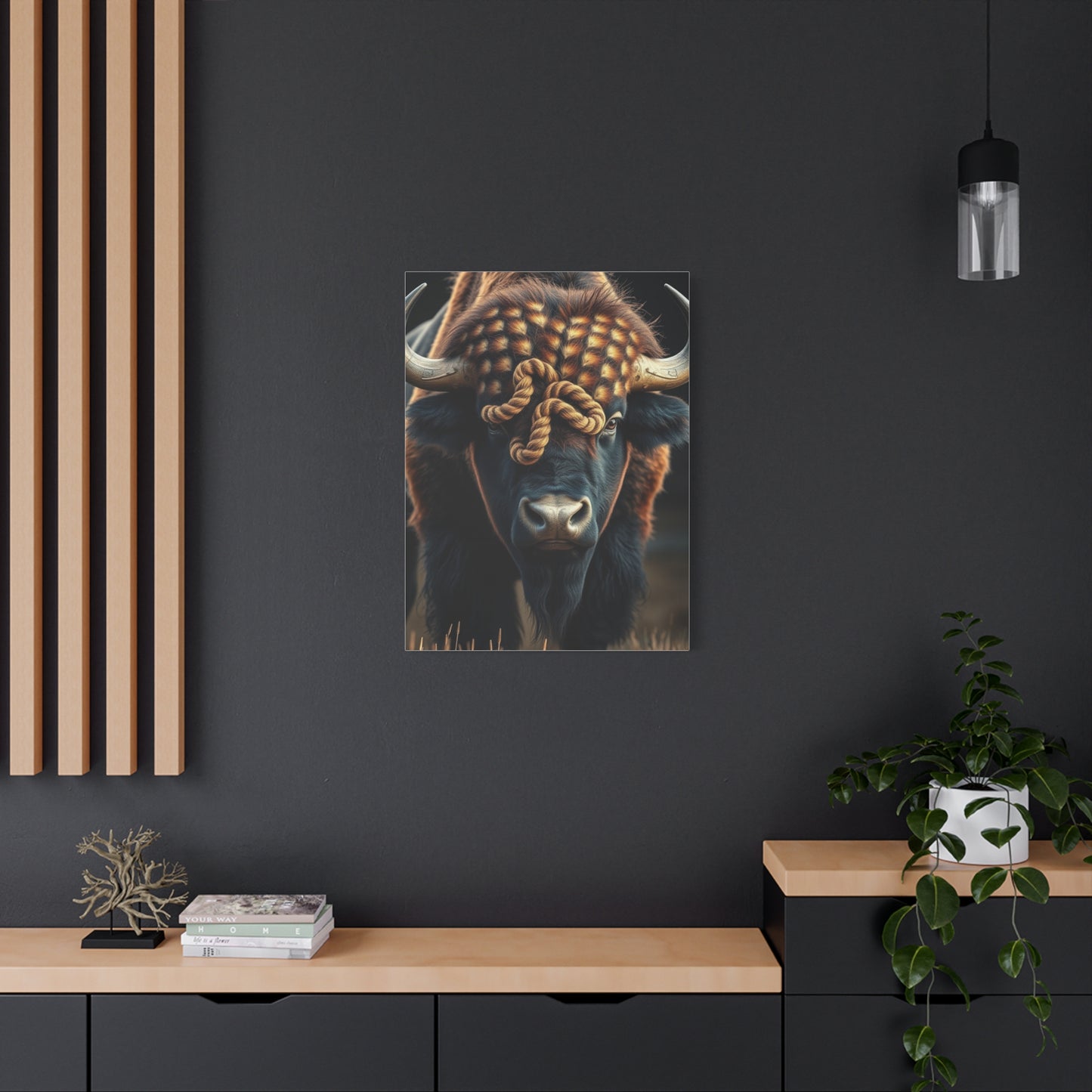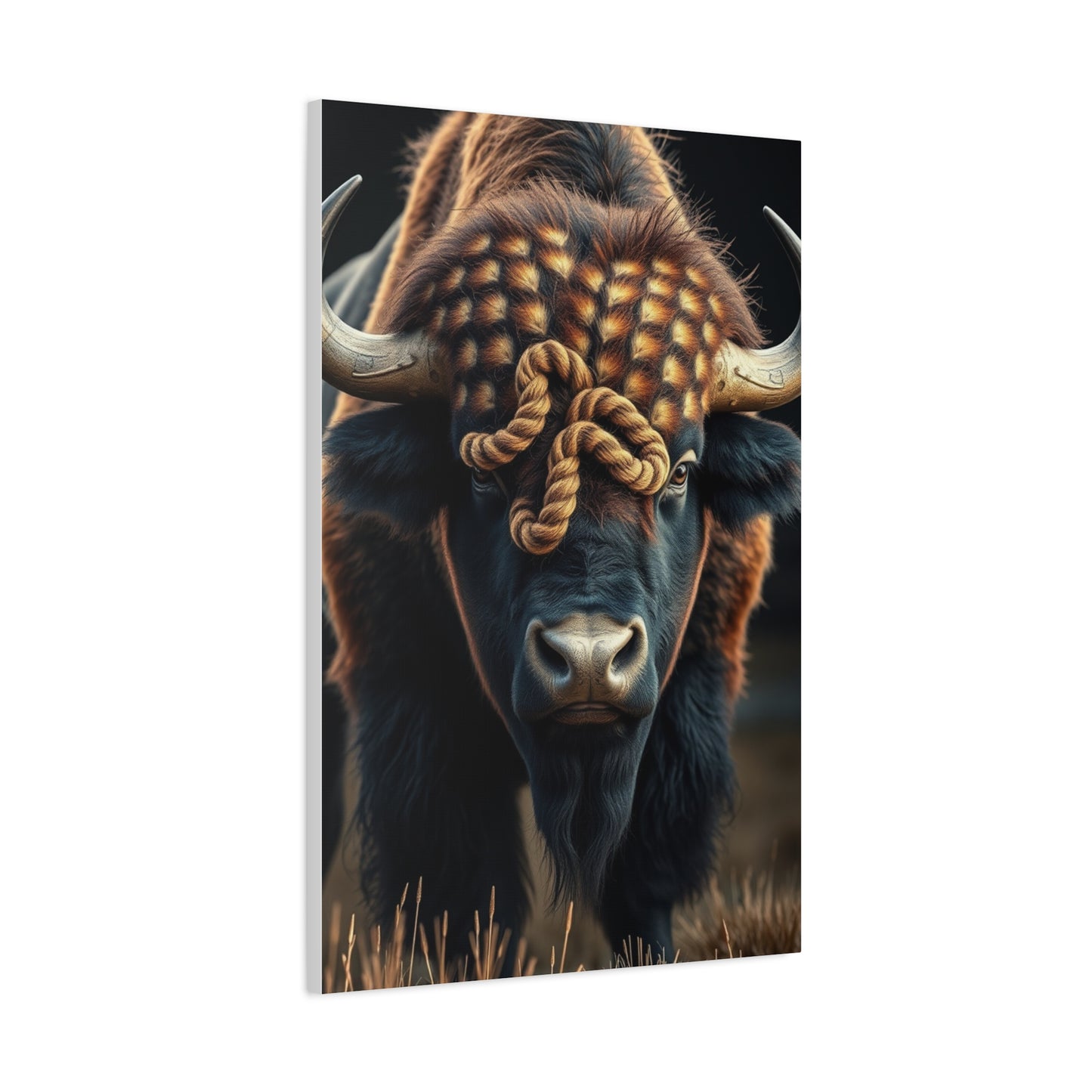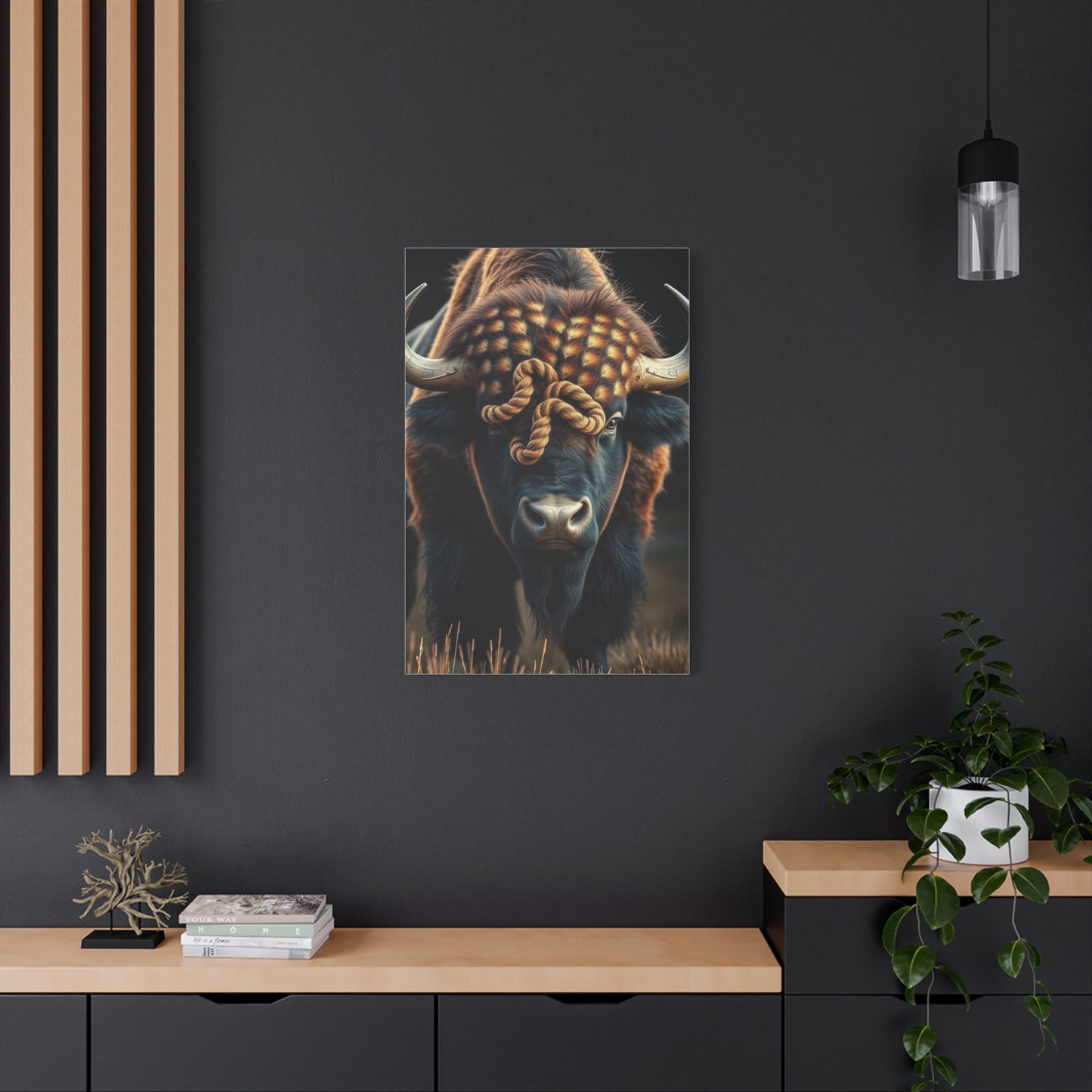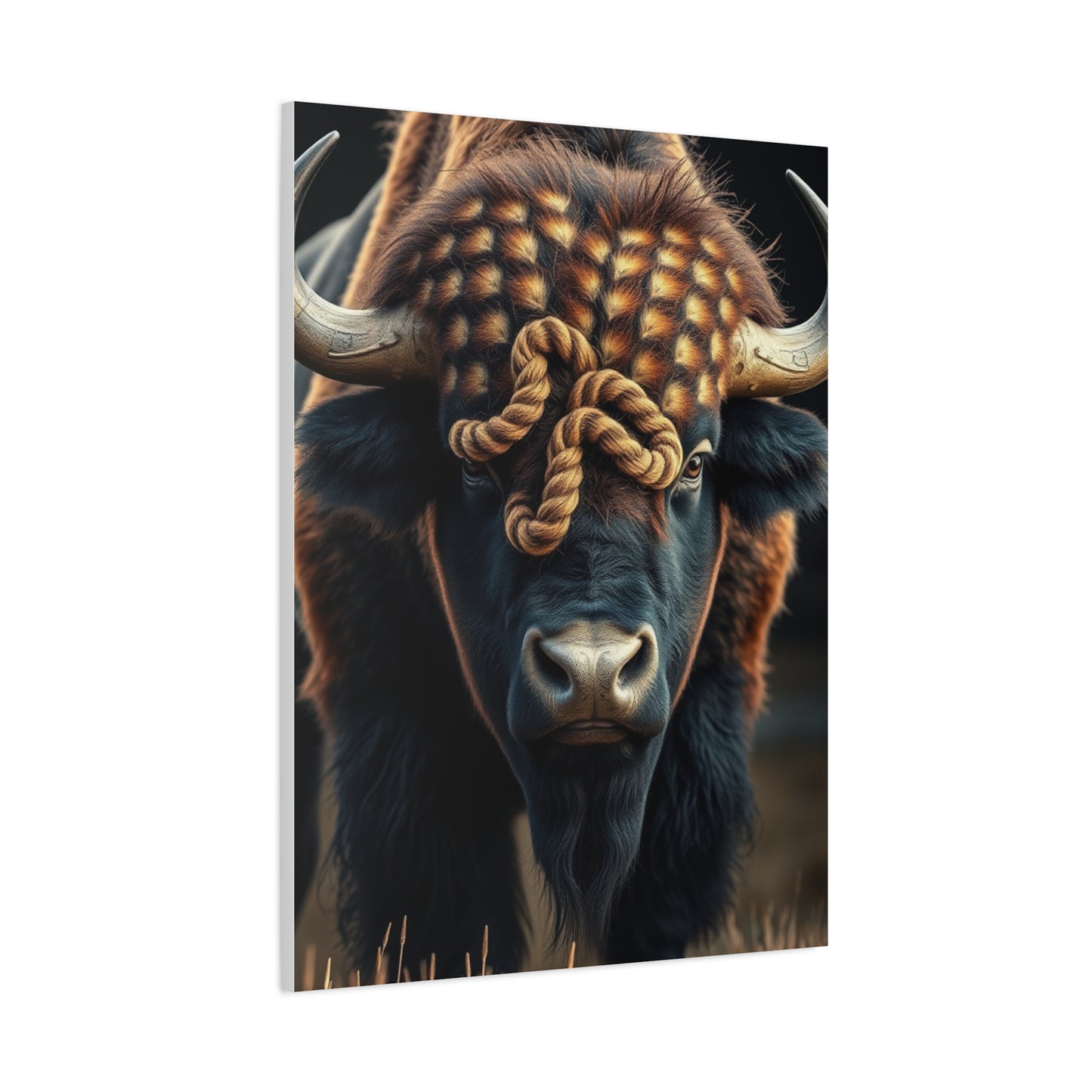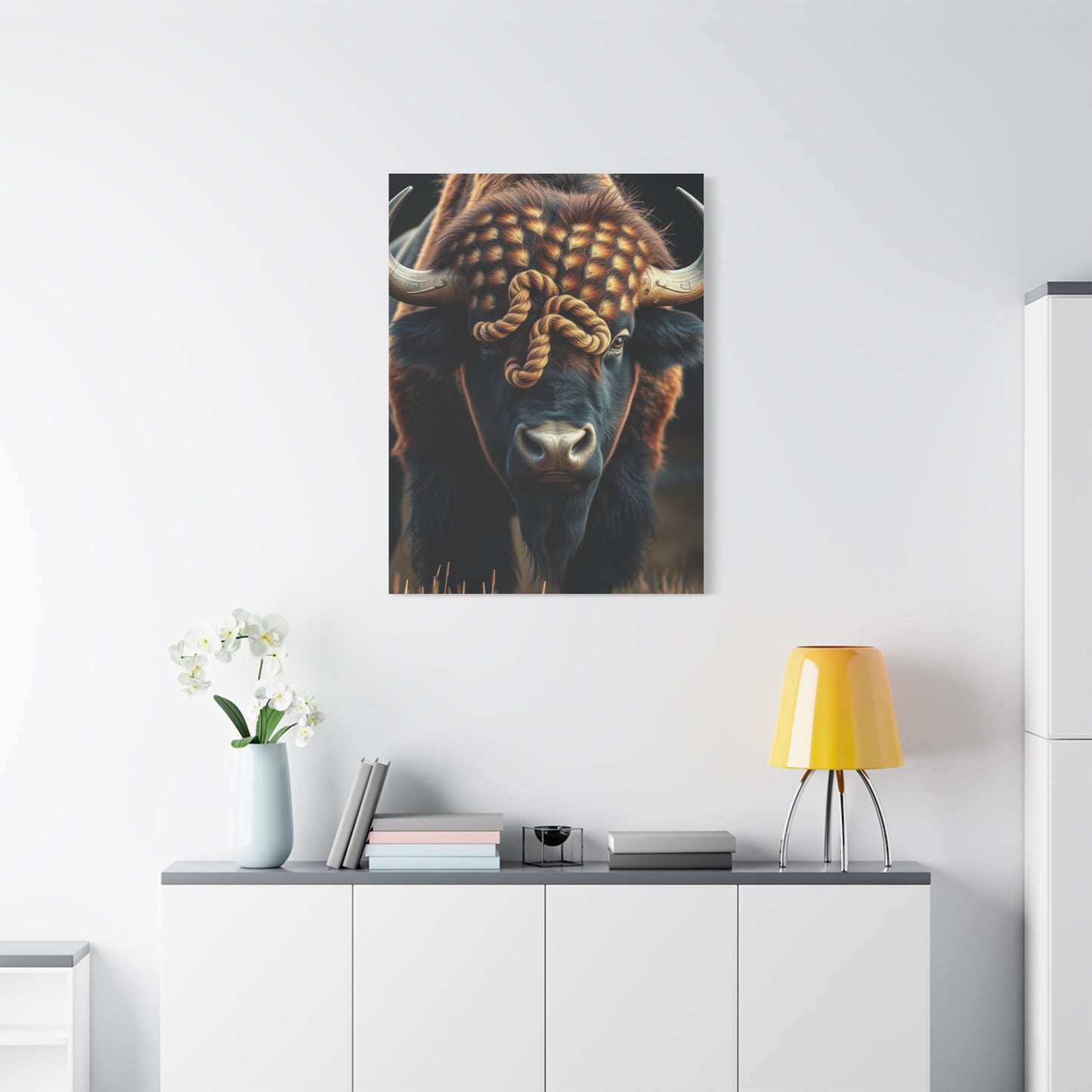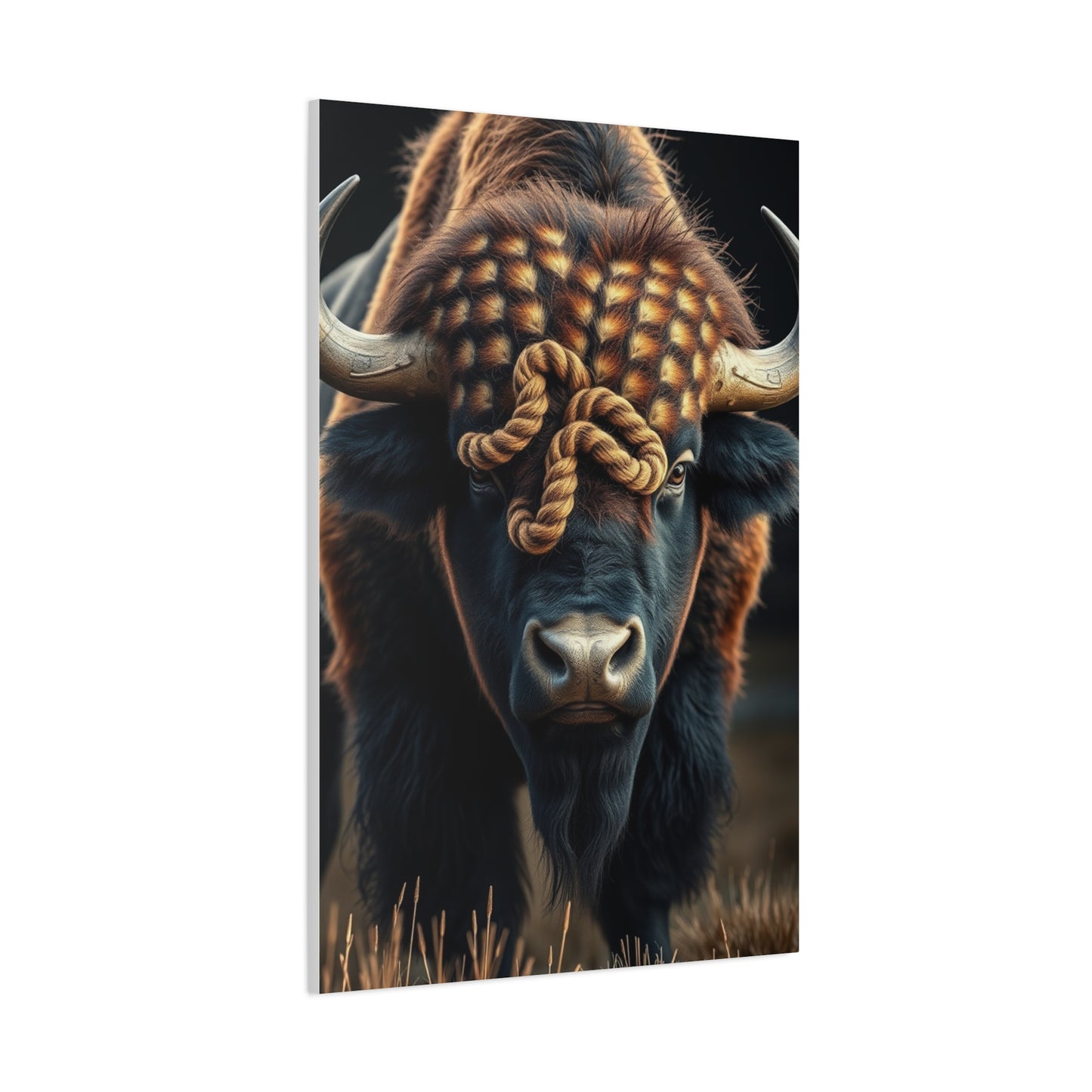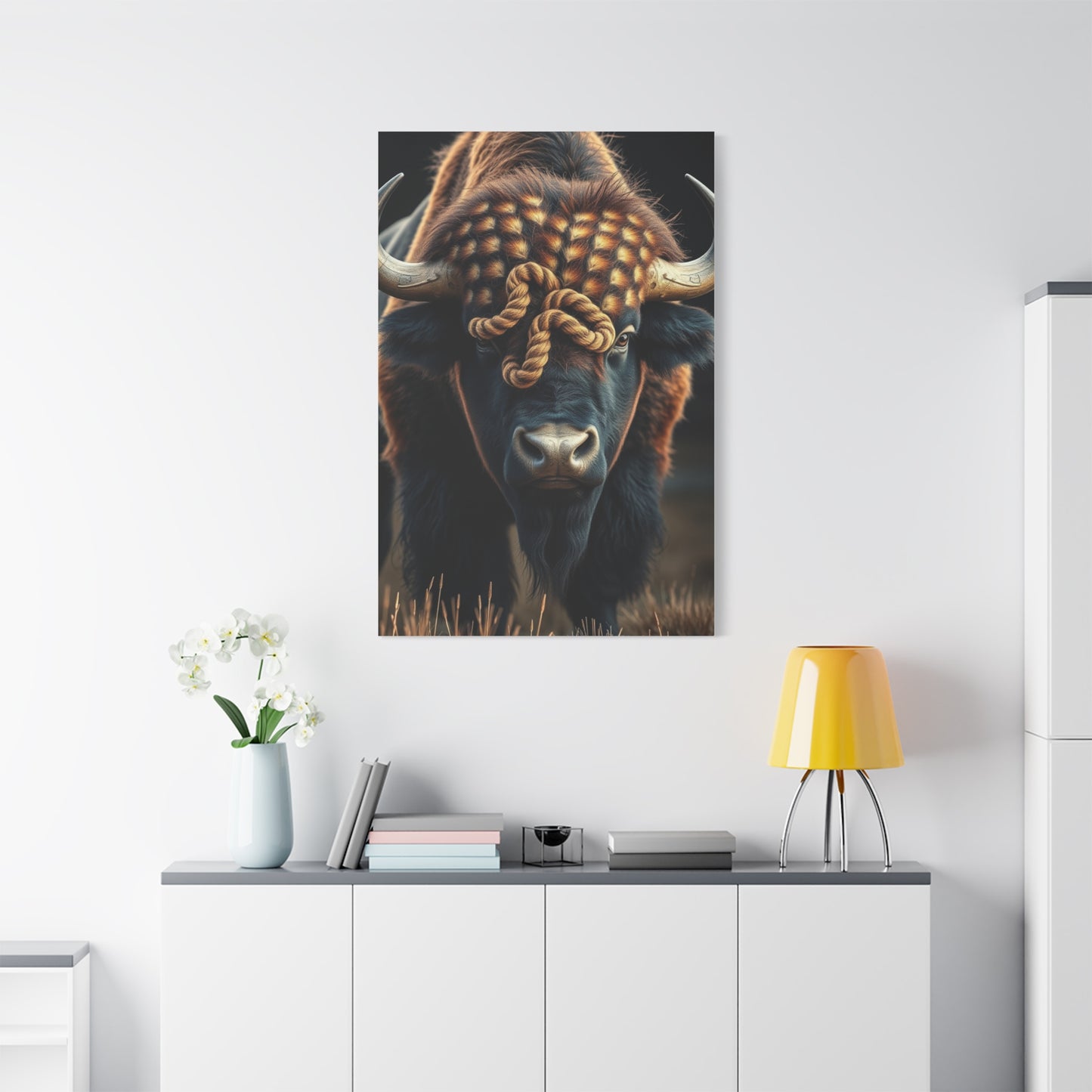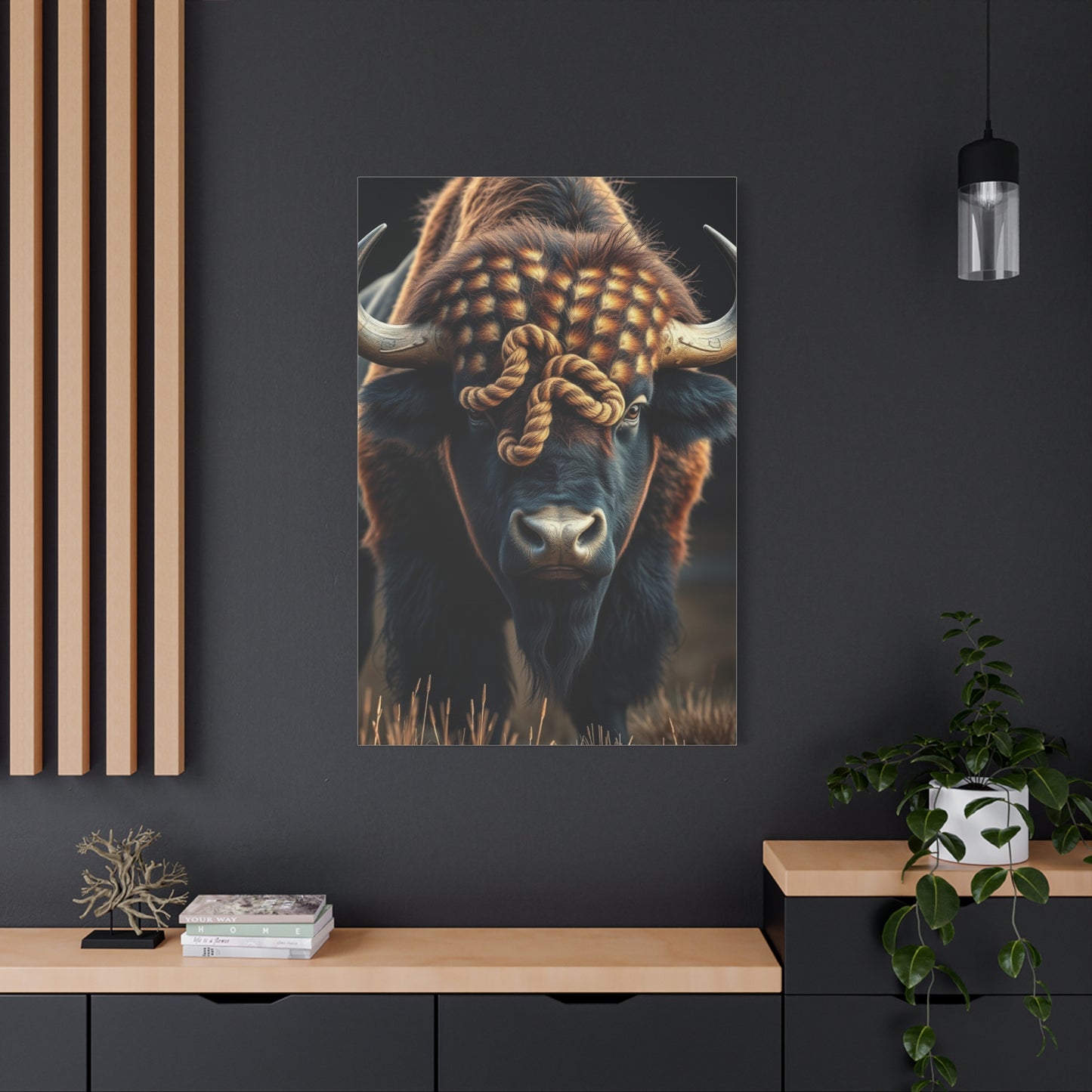The Intersection of Wildlife and Fine Art: Understanding Buffalo Reverie Wall Art
The majestic buffalo has long stood as an iconic symbol of the untamed wilderness, representing strength, resilience, and the profound beauty of nature in its purest form. When translated onto canvas through artistic interpretation, these magnificent creatures create a powerful visual narrative that speaks to our innate connection with the natural world. The concept of Buffalo Reverie emerges from this intersection of wildlife appreciation and artistic expression, offering a window into the soul of the wild that can transform any living space into a sanctuary of natural wonder.
Canvas art featuring buffalo imagery carries with it centuries of cultural significance and spiritual meaning. These noble animals once roamed vast prairies in numbers that seemed limitless, their presence shaping entire ecosystems and sustaining indigenous communities for generations. Today, artistic representations of buffalo serve as poignant reminders of our responsibility to preserve wildlife and maintain our connection to the natural world that sustains us all. The dreamlike quality suggested by the term reverie perfectly encapsulates the meditative state these artworks can inspire in viewers, creating moments of contemplation and peace in our often chaotic modern lives.
The artistic movement surrounding buffalo-themed canvas prints has grown considerably in recent years, driven by a collective yearning for authenticity and natural beauty in our increasingly urbanized environments. People seek to bring elements of the wild into their homes, creating personal refuges that reflect their values and aesthetic preferences. Canvas prints featuring these magnificent animals fulfill this desire while offering exceptional versatility in design applications, from rustic farmhouse settings to contemporary minimalist spaces. The textured quality of canvas material adds depth and dimension to buffalo imagery, creating artwork that feels alive and dynamic rather than flat and static.
Understanding the appeal of buffalo-themed canvas art requires examining both the historical significance of these animals and the psychological impact of nature-inspired decor. Research in environmental psychology consistently demonstrates that exposure to natural imagery reduces stress, improves mood, and enhances overall wellbeing. Buffalo representations specifically evoke feelings of strength, stability, and groundedness, qualities that resonate deeply with individuals seeking to create calming yet empowering home environments. The contemplative nature of these artworks invites viewers to pause, breathe, and reconnect with something larger than themselves, offering respite from the demands of daily life.
The technical aspects of creating buffalo canvas prints involve careful consideration of color palettes, composition, and printing techniques that honor the subject matter while creating visually compelling artwork. Artists working in this genre often employ earth tones that reflect natural prairie landscapes, though contemporary interpretations may introduce unexpected color choices that add modern flair. The quality of canvas material and printing processes significantly impacts the final product, with premium options offering richer colors, greater detail, and improved longevity. Understanding these technical elements helps consumers make informed decisions when selecting pieces for their homes, ensuring they invest in artwork that will maintain its beauty and impact for years to come.
Why Canvas Prints Featuring Buffalo Are Perfect for Your Home
Incorporating buffalo-themed canvas prints into residential spaces offers numerous advantages that extend beyond mere decoration. These artworks function as focal points that anchor room designs while simultaneously creating emotional atmospheres conducive to relaxation and reflection. The inherent grandeur of buffalo imagery commands attention without overwhelming spaces, striking an ideal balance between visual impact and harmonious integration. Unlike more abstract or purely decorative pieces, buffalo representations carry narrative weight and symbolic significance that give rooms depth and character.
The versatility of buffalo canvas prints makes them suitable for virtually any room in the home. In living rooms, large-scale buffalo artworks create conversation pieces that reflect homeowner personality and values. These spaces benefit from the grounding presence of such imagery, which can serve as visual anchors around which other design elements orbit. Bedrooms gain tranquil, meditative qualities from buffalo prints, with the animals' calm strength promoting restful sleep and peaceful morning awakenings. Home offices and studies particularly benefit from buffalo artwork, as the symbolism of determination and resilience can provide subtle motivation during challenging work periods.
The color schemes typically associated with buffalo canvas prints integrate seamlessly with popular interior design trends. Earthy palettes featuring browns, tans, greens, and muted blues complement both warm and cool color schemes, making these pieces exceptionally adaptable. For homes decorated in neutral tones, buffalo artwork adds visual interest and organic texture without introducing jarring color contrasts. In spaces featuring bolder color choices, the natural tones of buffalo prints provide visual rest and balance. This chromatic flexibility means homeowners can confidently select buffalo-themed canvas art knowing it will coordinate with existing decor while offering sufficient distinctiveness to make genuine design statements.
Size considerations play crucial roles in determining how buffalo canvas prints impact spaces. Large-scale pieces work beautifully in spacious rooms with high ceilings, where their grand presence matches architectural proportions. Medium-sized prints excel in creating intimate gallery walls or serving as focal points in smaller rooms without overwhelming them. Multiple smaller buffalo prints can be arranged in groupings that tell visual stories or create rhythm across wall spaces. The scalability of canvas printing technology allows for custom sizing that perfectly fits specific wall dimensions, ensuring optimal visual impact regardless of space constraints.
The Artistry Behind Buffalo Canvas Wall Art
Creating compelling buffalo canvas wall art requires a sophisticated blend of technical skill, artistic vision, and deep understanding of the subject matter. Artists working in this genre must capture not merely the physical appearance of buffalo but also their essence, the intangible qualities that make these animals so captivating to human observers. This challenge demands careful study of buffalo anatomy, behavior, and habitat, combined with artistic techniques that translate three-dimensional subjects into two-dimensional representations that feel alive and dynamic. The most successful buffalo artworks transcend mere documentation, achieving a quality of expression that resonates emotionally with viewers.
Photography forms the foundation for many buffalo canvas prints, with wildlife photographers spending countless hours in the field capturing these magnificent creatures in their natural habitats. The timing required to photograph buffalo at optimal moments demands extraordinary patience, as these animals move according to their own rhythms rather than human schedules. Photographers must consider lighting conditions, weather, background elements, and animal behavior, waiting for all factors to align perfectly. Golden hour lighting, occurring shortly after sunrise or before sunset, often provides the most flattering illumination for buffalo photography, casting warm tones that enhance the animals' natural coloring while creating dramatic shadows that emphasize their muscular forms.
Traditional painting techniques offer alternative approaches to creating buffalo canvas art, with artists employing oils, acrylics, or mixed media to render these subjects. Oil painting particularly suits buffalo imagery, as the medium's rich texture and blending capabilities allow for nuanced representation of fur texture, atmospheric conditions, and subtle color variations. Acrylic paints offer faster drying times and vibrant colors that work well for more contemporary interpretations of buffalo subjects. Some artists combine painting with photography, beginning with photographic references that they then interpret through their unique artistic lenses, adding elements of abstraction, stylization, or emotional expression that pure photography cannot achieve.
Composition decisions significantly impact how buffalo artwork communicates with viewers. Artists must determine optimal subject placement within the frame, considering principles of visual balance, negative space, and focal point creation. Buffalo positioned centrally in compositions create feelings of stability and confrontation, as viewers meet the animals directly. Off-center placements introduce dynamic tension and suggest movement or narrative progression. The inclusion or exclusion of environmental context similarly affects meaning, with isolated buffalo creating intimate, portrait-like qualities while animals depicted within landscape settings emphasize ecological relationships and habitat contexts.
A Bold Touch for Rustic Home Decor
Buffalo-themed canvas prints provide ideal focal points for rustic home decor schemes, where their natural subject matter and earthy aesthetics align perfectly with design philosophies emphasizing organic materials, weathered finishes, and connection to nature. Rustic interiors celebrate authenticity and simplicity, rejecting pretension in favor of honest materiality and functional beauty. Buffalo imagery embodies these principles, representing creatures that exist without artifice, their beauty deriving from adaptation and survival rather than ornamentation. The visual weight of buffalo subjects adds bold statements to rustic spaces without introducing elements that feel incongruous with overall design directions.
Material pairings in rustic settings enhance buffalo canvas print impact through complementary textures and finishes. Reclaimed wood walls or accents create perfect backdrops for buffalo artwork, their weathered surfaces and visible grain patterns echoing the organic qualities of the animal subjects. Stone elements, whether natural rock fireplaces or stacked stone accent walls, share the solidity and permanence that buffalo represent, creating visual conversations between architectural features and artwork. Wrought iron fixtures and hardware introduce appropriate industrial touches that reference frontier heritage without competing visually with buffalo prints. Leather furniture and accessories share animalistic origins that create thematic connections reinforcing rustic authenticity.
Color palettes in rustic interiors naturally complement buffalo canvas print aesthetics. Earth tones dominate rustic color schemes, with various browns, tans, creams, and forest greens creating warm, welcoming atmospheres. These colors echo buffalo natural coloring and prairie habitat hues, ensuring visual harmony between artwork and surroundings. Accent colors in rustic spaces often include deep reds, burnt oranges, and golden yellows that reference autumn foliage and sunset skies, all of which coordinate beautifully with typical buffalo print palettes. The overall effect creates immersive environments where all visual elements reinforce rustic themes, with buffalo artwork serving as central organizing forces around which other design choices orbit.
Furniture selection in rustic spaces featuring buffalo canvas prints should emphasize substantial, well-crafted pieces that match the visual weight of the artwork. Oversized sofas and chairs in distressed leather or durable fabrics provide appropriate seating that can stand alongside bold buffalo imagery without appearing insignificant. Heavy wooden tables with visible joinery and substantial legs echo buffalo solidity while providing functional surfaces for daily living. Vintage or antique pieces add character and history that complement the timeless quality of buffalo subjects. The goal involves creating rooms where every element feels purposeful and authentic, with buffalo artwork reinforcing rather than contradicting overall design narratives.
Lighting design in rustic interiors with buffalo canvas prints should emphasize warm color temperatures and varied sources that create depth and interest. Exposed Edison bulbs, wrought iron chandeliers, and vintage-style lamps all contribute appropriate lighting while supporting rustic aesthetics. Directional lighting can highlight buffalo artwork, creating dramatic effects that emphasize the power and presence of these subjects. Candles and firelight introduce living light sources that add romantic, primal qualities particularly suited to rustic environments. The interplay between light and shadow across textured surfaces, from canvas prints to exposed beams, creates dynamic spaces that change throughout the day and year.
The Power of Buffalo Imagery in Modern Canvas Art
Contemporary artistic movements have embraced buffalo imagery, reinterpreting these traditional subjects through modern lenses that create fresh, unexpected interpretations. Modern canvas art featuring buffalo subjects demonstrates how classic natural subjects remain perpetually relevant when approached with innovation and creativity. Artists working in contemporary styles apply abstract techniques, digital manipulation, or conceptual frameworks to buffalo imagery, generating artworks that honor these animals while speaking to current aesthetic sensibilities. This ongoing reinterpretation ensures buffalo-themed canvas art never becomes stale or dated, continually offering new perspectives and applications.
Minimalist approaches to buffalo canvas art exemplify modern artistic sensibilities that value simplicity, negative space, and essential forms. These interpretations might reduce buffalo to silhouettes against plain backgrounds, emphasizing shape and stance while eliminating environmental context and fine detail. The resulting artworks possess clean, sophisticated aesthetics that integrate seamlessly into contemporary interiors while maintaining subject recognizability and symbolic power. Minimalist buffalo prints prove particularly effective in urban settings where simplified forms contrast productively with architectural complexity, providing visual rest and focal clarity within busy environments.
Abstract expressionist interpretations of buffalo subjects prioritize emotional impact and artistic gesture over literal representation. These works might employ vigorous brushwork, drips, splatters, or unconventional color choices to convey buffalo energy and presence without rendering recognizable forms. While such extreme abstraction risks losing subject identification, skilled artists maintain enough visual clues that viewers understand they're encountering buffalo-inspired works even as they appreciate pure formal qualities. This approach appeals to collectors seeking artworks that function primarily as aesthetic objects while carrying subtle thematic content that adds meaning beyond mere decoration.
Geometric buffalo representations bring mathematical precision to organic subjects, creating intriguing tensions between natural and constructed forms. These artworks might fragment buffalo into faceted planes resembling cubist portraits or reduce them to assemblages of basic shapes like circles, triangles, and rectangles. The resulting images possess contemporary sophistication while maintaining enough resemblance to source subjects that buffalo identity remains clear. Geometric approaches work exceptionally well in modern interiors featuring clean lines and minimalist furniture, where their structured aesthetic complements architectural and design choices while introducing natural subject matter that softens potentially austere environments.
Mixed media explorations combining photography, painting, digital manipulation, and collage create layered buffalo canvas artworks that reward extended viewing. These complex pieces might overlay painted or drawn elements onto photographic bases, combine multiple buffalo images into composite creatures, or integrate text, pattern, or symbolic imagery that expands meaning beyond simple animal portraiture. Mixed media works tend toward larger scales that allow intricate details to remain visible, making them suitable for statement walls in spacious modern interiors. Their complexity provides ongoing visual interest that prevents boredom even after years of daily exposure.
Wall Art Featuring Buffalo as Symbols of Strength and Serenity
The symbolic duality of buffalo as embodiments of both power and tranquility makes their canvas representations particularly compelling for residential applications. These animals possess obvious physical strength, with adult bulls weighing up to two thousand pounds and capable of defending themselves against most predators. Yet buffalo also exhibit remarkable calm, grazing peacefully for hours and moving with deliberate grace despite their massive size. This combination of strength and serenity creates psychological impacts that make buffalo wall art simultaneously grounding and empowering, helping viewers feel both protected and peaceful within their personal spaces.
Historical and cultural symbolism enriches contemporary understanding of buffalo imagery in wall art. Various indigenous cultures regarded buffalo as sacred beings representing abundance, gratitude, and proper relationship with creation. The white buffalo holds particular spiritual significance in many traditions, symbolizing hope, transformation, and sacred prophecy. Understanding these cultural dimensions adds depth to appreciation of buffalo wall art, transforming simple animal portraits into carriers of profound meaning. While non-indigenous individuals should approach these symbols with respect and awareness of their origins, buffalo imagery remains broadly relevant as representations of humanity's relationship with the natural world.
Psychological research supports intuitive understandings of how buffalo imagery affects viewers. Studies examining human responses to animal imagery consistently find that large, powerful herbivores evoke feelings of awe and respect without the fear responses predators might trigger. Buffalo specifically register as non-threatening despite their size, allowing viewers to appreciate their strength without feeling endangered. This psychological safety combined with obvious power creates optimal conditions for both relaxation and inspiration. Wall art capitalizing on these responses helps create home environments that support mental health and emotional wellbeing through carefully curated visual experiences.
Meditation and mindfulness practices benefit from buffalo wall art presence through subject appropriateness for contemplative focus. The calm bearing typical of buffalo in repose provides ideal visual anchors for meditation, with their stillness encouraging mental quieting. Practitioners might use buffalo imagery as focal points during sitting meditation or as reminders to embody buffalo-like qualities of groundedness and presence throughout daily activities. The symbolic association between buffalo and earth elements reinforces this meditative utility, helping practitioners connect with feelings of stability and rootedness that support deeper contemplative states.
Feng shui principles offer additional frameworks for understanding buffalo wall art symbolic power. In this Chinese system of spatial arrangement, buffalo imagery typically associates with earth element energy, bringing stability, nourishment, and supportive qualities to spaces. Proper placement according to feng shui guidelines might position buffalo artwork in specific areas related to health, relationships, or career depending on desired outcomes. While Western practitioners might not fully embrace feng shui philosophy, its principles regarding visual weight, directional associations, and symbolic meaning can inform thoughtful artwork placement that maximizes positive environmental impacts.
Personal interpretation remains equally valid as cultural or philosophical frameworks when engaging buffalo wall art symbolism. Individuals might see buffalo as representing qualities they wish to cultivate, challenges they've overcome, or simply subjects they find beautiful and compelling. These private meanings make buffalo artwork deeply personal rather than merely decorative, creating emotional investments that increase both enjoyment and longevity. The most successful wall art selections resonate on multiple levels simultaneously, functioning aesthetically while carrying personal significance that makes them irreplaceable elements of home environments rather than interchangeable decorative objects.
Elevating Your Decor with Buffalo Art Prints
Strategic incorporation of buffalo art prints elevates overall interior design quality by introducing sophisticated natural elements that demonstrate aesthetic awareness and intentional curation. Unlike generic decorative objects chosen primarily for their ability to fill wall space, buffalo prints make clear statements about inhabitant values, interests, and design sensibilities. These selections signal appreciation for nature, comfort with bold imagery, and willingness to make distinctive choices that reflect personal taste rather than following generic trends. The cumulative effect of such intentional decisions transforms ordinary rooms into memorable spaces with clear design identities.
Gallery wall configurations featuring buffalo prints alongside complementary imagery create curated collections that tell visual stories while demonstrating design sophistication. Successful gallery walls balance variety with cohesion, combining different sizes, orientations, and subject matter while maintaining unifying elements like consistent color palettes, frame styles, or thematic connections. Buffalo prints might anchor gallery walls focused on wildlife, western themes, or natural world beauty, surrounded by supporting pieces that elaborate without duplicating. The arrangement process itself becomes creative expression, with spatial relationships between pieces contributing as much to overall impact as individual artwork qualities.
Contrast strategies using buffalo prints introduce dynamic tensions that energize otherwise monotonous spaces. In predominantly light, airy rooms, dark dramatic buffalo imagery provides visual weight and focal intensity. Conversely, lighter buffalo representations brighten and open darker spaces without sacrificing the gravitas these subjects naturally possess. Size contrasts similarly create interest, with oversized buffalo prints making bold statements in rooms dominated by smaller-scale elements, or intimate buffalo portraits adding detail focus in spaces featuring expansive furniture and architectural features. These deliberate contrasts prevent spaces from reading as one-note, adding complexity that rewards attention and prevents visual boredom.
Seasonal rotation of buffalo prints offers opportunities to refresh spaces without major investments or permanent commitments. Collections might include buffalo in various seasonal settings, with winter scenes displayed during cold months, spring images celebrating renewal, summer prints during warm seasons, and autumn buffalo marking transitional periods. This rotation keeps spaces feeling current and responsive to changing conditions while maintaining consistent thematic focus. Storage of off-season prints requires careful protection from moisture, light, and physical damage, but the investment in variety pays dividends through renewed appreciation each time pieces return to display after absences.
How Buffalo Canvas Prints Connect You to Nature
Urban and suburban living increasingly distances people from direct natural world engagement, creating psychological and physical health consequences that researchers continue documenting. Buffalo canvas prints serve as bridges across this divide, bringing natural imagery into built environments where actual wilderness access remains limited or impossible. While no artwork fully substitutes for genuine outdoor experiences, nature-themed prints provide meaningful surrogate connections that support wellbeing between actual wilderness encounters. The specific choice of buffalo imagery creates particularly strong connections due to these animals' iconic status and powerful symbolic associations with unspoiled wild places.
Biophilic design principles recognize humans' innate need for nature connection and seek to satisfy this need through architectural and design choices that incorporate natural elements. Living plants, natural materials, and nature imagery all contribute to biophilic environments that research shows reduce stress, improve cognitive function, and enhance overall satisfaction with spaces. Buffalo canvas prints represent accessible, low-maintenance approaches to incorporating biophilic elements, particularly valuable in spaces where living plants struggle or where maintenance requirements must remain minimal. The psychological benefits derived from viewing nature imagery approach those gained from actual nature exposure when images possess sufficient size, quality, and placement to create immersive viewing experiences.
Educational dimensions of buffalo canvas prints strengthen nature connections through increased knowledge and awareness. High-quality wildlife images that accurately depict buffalo anatomy, behavior, and habitat help viewers develop more sophisticated understandings of these animals beyond cartoon or symbolic representations. This education fosters appreciation that can motivate conservation support and environmental stewardship. Children particularly benefit from regular exposure to realistic wildlife imagery that builds knowledge frameworks and encourages curiosity about natural world complexity. Family conversations prompted by buffalo artwork can explore topics ranging from animal behavior to ecosystem functioning to conservation challenges, making these prints valuable educational tools as well as decorative elements.
Mindfulness and present-moment awareness practices find natural support in buffalo canvas print contemplation. Taking moments throughout busy days to pause and truly see artwork provides mini-meditations that interrupt autopilot functioning and restore conscious presence. The calm bearing typical of buffalo subjects encourages viewers to adopt similar tranquility, using visual engagement as gateway to mental settling. Over time, these brief contemplative moments accumulate into significant mindfulness practice that supports mental health without requiring dedicated meditation sessions. The artwork serves as both reminder and support for maintaining mindful awareness amid daily demands and distractions.
Seasonal and circadian rhythm awareness can be maintained through attention to lighting, weather, and atmospheric conditions depicted in buffalo canvas prints. Images showing specific times of day, seasons, or weather patterns help viewers maintain connection to natural cycles even when working in windowless offices or spending most time indoors. This connection supports healthier circadian rhythm maintenance and reduces the disorientation that can result from artificially lit, climate-controlled environments lacking natural temporal cues. Selecting buffalo prints that reflect local ecosystems further strengthens this connection, helping viewers maintain awareness of what's happening in nearby natural areas even when unable to visit them directly.
A Perfect Blend of Art and Nature
Buffalo-themed canvas prints occupy unique positions at the intersection of fine art and nature documentation, combining aesthetic sophistication with authentic natural subject matter. This duality allows them to satisfy multiple viewer needs simultaneously, functioning as both beautiful objects worthy of contemplation and windows into wild world realities deserving respect and protection. The most successful buffalo canvas art maintains this balance, never sacrificing artistic quality for documentary accuracy or abandoning authentic representation in pursuit of pure aesthetic effect. This integration of seemingly disparate concerns creates artworks with unusual depth and staying power that remain compelling across repeated viewings and changing circumstances.
Photography-based buffalo prints exemplify art-nature synthesis through technical excellence that reveals details and perspectives unavailable to casual observation. Wildlife photographers employ specialized equipment, extensive field knowledge, and exceptional patience to capture images that show buffalo in optimal lighting, compelling compositions, and revelatory moments. Post-processing techniques enhance these captures without fundamentally falsifying them, optimizing visual impact while maintaining essential truth to subject. The resulting prints educate viewers about actual buffalo appearance and behavior while providing aesthetic experiences that transcend mere documentation. This combination creates unusual value compared to either pure documentary photography or entirely imagined artistic representations.
Painted buffalo canvas art demonstrates similar synthesis through artists' abilities to observe deeply, understand thoroughly, and represent authentically while exercising creative license that enhances meaning and impact. Traditional wildlife artists spend years studying animal anatomy, movement, and behavior, ensuring their representations possess accuracy that viewers instinctively recognize as truthful. This foundation allows creative departures that emphasize particular qualities, suggest narrative elements, or create atmospheric effects impossible in pure photography. The tension between accurate observation and creative interpretation generates artistic energy that makes painted buffalo works compelling beyond their subject matter alone.
Mixed media approaches to buffalo canvas art create particularly interesting art-nature dialogues by combining photographic elements with painted, drawn, or digitally created additions. These layered works might begin with accurate photographic bases that artists then interpret through overlaid brushwork that emphasizes certain features while abstracting others. Alternatively, realistic painted buffalo might be placed against photographic or abstract backgrounds that create contextual meanings. These combinations explicitly acknowledge the constructed nature of all artistic representation while celebrating both documentary accuracy and creative expression. The resulting artworks invite viewers to consider relationships between observation and interpretation, reality and representation, that underlie all artistic practice.
Digital art techniques offer unprecedented control over buffalo canvas creation while raising questions about authenticity and artistic value. Digital artists can combine multiple photographs, paint entirely within software, or blend photographic elements with digital painting to create images impossible to produce through traditional means. While purists sometimes dismiss digital work as somehow less authentic than traditional media, this position ignores digital techniques' genuine creative possibilities and the skill required to use them effectively. Digital buffalo art that demonstrates clear artistic vision and technical excellence deserves equal consideration with work produced through traditional methods, its value determined by aesthetic and expressive success rather than production techniques.
Conceptual frameworks surrounding buffalo canvas art influence how viewers understand and engage with these works. Pieces presented explicitly as fine art invite aesthetic contemplation and formal analysis focusing on composition, color, and technique. Works marketed as wildlife documentation encourage attention to subject accuracy and educational content. However, the strongest buffalo canvas art resists simple categorization, functioning simultaneously as aesthetic object and nature document while potentially incorporating conceptual, cultural, or political dimensions that add further meaning layers. This multidimensional quality distinguishes exceptional buffalo art from competent but limited examples that serve single purposes without additional depth.
Add Tranquility and Power to Your Walls
The paradoxical combination of tranquility and power embodied in buffalo imagery creates uniquely beneficial psychological impacts for residential spaces. These qualities might seem contradictory, with tranquility suggesting peace and power implying force, yet buffalo naturally possess both characteristics simultaneously. This integration offers viewers permission to embrace their own complexity, acknowledging that strength and serenity need not exist in opposition but can mutually support and enhance each other. Buffalo canvas prints thus become visual reminders that balanced lives incorporate both action and rest, assertion and acceptance, engagement and withdrawal.
Neuroscience research illuminates how buffalo imagery affects brain functioning and emotional states. Viewing nature scenes activates parasympathetic nervous system responses that counter stress, reduce blood pressure, and promote relaxation. Simultaneously, powerful animal imagery stimulates areas associated with safety evaluation and resource assessment, creating alertness without anxiety when subjects appear non-threatening. Buffalo specifically trigger this beneficial combination, registering as powerful enough to warrant attention while calm enough to permit relaxation. Regular exposure to such imagery helps regulate nervous system functioning, supporting healthier stress responses and improved emotional equilibrium.
Color psychology principles explain how typical buffalo canvas print palettes contribute to tranquil yet empowering atmospheres. Earth tones including browns, tans, and greens possess inherently calming qualities derived from evolutionary associations with safe, resource-rich environments. These colors rarely appear in dangerous contexts, allowing brains to interpret their presence as signaling security. Simultaneously, the substantial visual weight of buffalo subjects and often dramatic compositional elements introduce energizing qualities that prevent spaces from becoming soporifically dull. This balance between calming color and activating imagery creates optimal environments for both relaxation and productivity.
Placement strategies maximize buffalo canvas prints' ability to deliver tranquility and power to specific spaces. In bedrooms, buffalo artwork positioned opposite beds creates focal points for morning and evening viewing, bookending days with grounding imagery that supports restful sleep and energized awakenings. Living room placements above seating areas provide visual anchors for conversation and relaxation, with buffalo presence subtly influencing group dynamics toward calm strength. Home office installations inspire productive confidence while discouraging anxious striving, their calm power suggesting steady progress over frantic rushing. Meditation spaces particularly benefit from buffalo imagery that supports both alert presence and deep relaxation essential to contemplative practice.
Complementary practices enhance buffalo canvas prints' psychological benefits, creating synergistic effects greater than artwork alone achieves. Mindfulness meditation using buffalo images as focal points deepens both practice and artwork appreciation. Breathing exercises coordinated with buffalo viewing leverage visual stimuli to support physiological regulation. Gratitude practices acknowledging beauty and natural world inspiration foster positive emotional states. Movement practices like yoga or tai chi performed near buffalo artwork create associations between physical and visual centering. These integrated approaches transform buffalo prints from passive decorations into active tools for psychological wellbeing and personal development.
The Dreamlike Quality of Buffalo Canvas Prints
Certain buffalo canvas prints possess ethereal, dreamlike qualities that transport viewers beyond ordinary reality into realms of imagination and expanded consciousness. These effects arise from artistic choices including soft focus, atmospheric perspective, unusual lighting, or surreal compositional elements that suggest rather than explicitly state. The term reverie specifically invokes this dreamy quality, positioning buffalo encounters as vehicles for transcendent experiences rather than merely documentary observations. Artwork achieving this dreamlike quality offers escape from mundane concerns while maintaining enough grounding in recognizable reality to feel accessible rather than alien.
Photographic techniques that create dreamlike buffalo imagery include soft focus, shallow depth of field, and motion blur that introduce abstraction without abandoning subject recognition. Images shot through morning mist or backlit by low sun gain luminous qualities that seem to emanate from within rather than reflecting external light. Long exposure photography capturing buffalo movement as ghostly traces suggests temporal fluidity at odds with normal perception. These technical approaches transform ordinary wildlife documentation into poetry, with aesthetic impact transcending informational content to create emotional and spiritual resonances.
Painting styles particularly suited to dreamlike buffalo representations include impressionism, tonalism, and various contemporary approaches emphasizing atmosphere over detail. Impressionist buffalo might emerge from loose brushwork that captures essential forms while leaving specifics undefined, inviting viewers to complete images through imagination. Tonalist works employ limited palettes and soft edges to create contemplative moods conducive to reverie. Contemporary approaches might combine realistic buffalo with abstract or fantastical backgrounds, creating surreal juxtapositions that challenge conventional perception while maintaining emotional authenticity.
Color treatments contribute significantly to dreamlike qualities in buffalo canvas prints. Desaturated palettes approaching monochrome create distances from ordinary color experience, suggesting memory, dream, or altered consciousness states. Unexpected color combinations including pastels, jewel tones, or contrasting hues introduce fantastical elements while maintaining compositional integrity. Gradient transitions and color field techniques eliminate hard boundaries between forms, creating fluid visual experiences that resist rational analysis while remaining aesthetically compelling. These color approaches help viewers access intuitive, emotional responses rather than analytical, intellectual engagement.
Symbolic and metaphorical dimensions enhance buffalo canvas prints' dreamlike qualities by introducing meaning layers beyond literal representation. Buffalo might symbolize aspects of viewers' psyches, spiritual journeys, or life challenges they face. The animals become stand-ins for viewers themselves, their depicted circumstances reflecting internal rather than external realities. This metaphorical reading transforms wildlife art into psychological mirrors that reveal viewers to themselves, creating personal significance far exceeding generic animal portraits. The dreamlike presentation style signals that symbolic interpretation is not just permitted but intended, authorizing viewers to find personal meanings in imagery.
Buffalo Wall Art Bringing Peace and Majesty to Your Space
The simultaneous delivery of peaceful and majestic qualities makes buffalo wall art exceptional for creating balanced, harmonious home environments. Peace without majesty risks becoming bland and uninspiring, while majesty without peace can feel overwhelming or intimidating. Buffalo imagery naturally integrates these qualities, offering grandeur that impresses without threatening and serenity that soothes without boring. This combination creates environments where inhabitants feel both elevated and comfortable, inspired yet relaxed, challenged to grow while accepted as they are.
Majesty in buffalo wall art derives from multiple sources including subject size, compositional grandeur, and symbolic associations with wilderness and natural power. Full-body buffalo portraits emphasizing massive physiques convey physical majesty that commands respect. Landscape compositions showing buffalo against dramatic skies or expansive prairies evoke spatial majesty that humbles through scale. Close-up portraits revealing intelligent eyes and distinctive facial features communicate dignified presence that transcends physical dimensions. These various expressions of majesty elevate spaces beyond mundane functionality, reminding inhabitants that beauty and greatness exist beyond human creation.
Peaceful qualities in buffalo wall art emerge from subject demeanor, color palettes, and compositional stability. Buffalo depicted grazing, resting, or standing calmly radiate tranquility that influences viewer emotional states. Earth tone palettes lacking jarring contrasts create visual harmony conducive to psychological peace. Balanced compositions with clear focal points and minimal visual tension provide restful viewing experiences that don't demand constant attention yet reward engagement when offered. These peaceful qualities make buffalo artwork suitable for spaces dedicated to relaxation and rejuvenation, supporting healthy work-life balance through environmental design.
Spatial planning strategies optimize buffalo wall art's ability to deliver peace and majesty throughout homes. Entryways and foyers benefit from impressive buffalo pieces that establish tone immediately upon entry, announcing home character to visitors while helping inhabitants transition from external chaos to internal sanctuary. Living rooms accommodate larger buffalo artworks that anchor social spaces with confident presence while supporting conversation and connection. Bedrooms require more subtle approaches prioritizing peace over majesty, with gentler buffalo images promoting rest and regeneration. Transitional spaces like hallways can feature buffalo print series that create visual journeys guiding movement through homes.
Lighting design critically affects how buffalo wall art balances peace and majesty. Bright, direct lighting emphasizes majesty through high contrast and visual drama suitable for spaces supporting active engagement. Soft, diffused lighting prioritizes peace through gentle illumination that reduces eye strain and promotes calm. Adjustable lighting systems allow shifting between these qualities based on time of day and activity, with brighter settings for morning energy and dimmer options for evening relaxation. Natural light introduces temporal variation that keeps buffalo artwork alive and responsive to daily and seasonal rhythms.
The Meaning and Symbolism Behind Buffalo in Art
Buffalo symbolism spans diverse cultural traditions and historical contexts, each contributing meaning layers to contemporary artistic representations. Indigenous North American cultures developed profound spiritual and practical relationships with buffalo spanning thousands of years before European contact. These animals provided food, shelter, tools, and clothing while holding sacred significance in religious practices and worldviews. Buffalo represented abundance, gratitude, and proper relationship with creation, their respectful hunting expressing reciprocal obligations between humans and natural world. This heritage infuses modern buffalo art with depth transcending mere animal portraiture, connecting viewers to ancient wisdom traditions that remain relevant despite technological advancement.
American frontier mythology casts buffalo as symbols of wilderness conquest and western expansion during the nineteenth century. The near-extinction of buffalo herds through commercial hunting paralleled and facilitated indigenous displacement, with both processes driven by expansion ideologies that viewed nature as resource awaiting human exploitation. While this history carries troubling dimensions, it also establishes buffalo as icons of American West heritage that continue resonating in popular imagination. Buffalo artwork can engage this history critically while appreciating aesthetic and emotional power of frontier imagery, acknowledging complex legacies without rejecting all associations with western themes.
Environmental conservation movements have reclaimed buffalo as symbols of successful species recovery and ongoing preservation challenges. The dramatic rebound from fewer than one thousand individuals in the late 1800s to approximately five hundred thousand today demonstrates what dedicated conservation efforts can achieve. However, true wilderness buffalo populations remain small, with most animals existing in managed herds on ranches or protected reserves. This partial success story makes buffalo powerful symbols for contemporary environmentalism, representing both hope and ongoing struggle. Artwork featuring buffalo can thus communicate conservation values without explicit messaging, making these pieces meaningful for environmentally conscious viewers.
Personal symbolism allows individual viewers to project private meanings onto buffalo imagery regardless of cultural or historical associations. Some see buffalo as representing strength needed to overcome challenges, their massive forms and survivor status inspiring personal resilience. Others focus on community aspects, as buffalo live in herds with complex social structures, applying this to human relationship values. Still others emphasize grounding and earth connection, viewing buffalo as anchors to physical reality in increasingly virtual, abstracted modern life. This flexibility in symbolic interpretation makes buffalo artwork personally meaningful across diverse viewer backgrounds and belief systems.
Spiritual and metaphysical interpretations add further symbolic dimensions to buffalo in art. Some spiritual traditions assign specific meanings to buffalo encounters in dreams or visions, viewing them as messages from higher consciousness or spirit guides. Buffalo might represent abundance, gratitude, prayers being answered, or need to honor sacred aspects of life. White buffalo hold particular spiritual significance across multiple traditions, symbolizing hope, transformation, and prophetic messages. While not all viewers approach buffalo artwork from spiritual perspectives, awareness of these dimensions enriches understanding and may resonate with those seeking deeper meaning in their environmental choices.
Archetypal psychology offers frameworks for understanding buffalo's psychological impact through universal symbolic patterns. Buffalo might be seen as representing the Self archetype, the integrated totality of personality that combines conscious and unconscious elements. Their combination of power and peace reflects integrated personality balancing strength with compassion. Alternatively, buffalo might connect to Great Mother archetype through nourishing, sustaining qualities they provided indigenous peoples. Understanding these archetypal dimensions helps explain buffalo imagery's deep resonance despite viewers lacking conscious knowledge of symbolic traditions, as archetypes operate through universal patterns transcending cultural specifics.
Buffalo Art as a Perfect Pairing for Minimalist Spaces
Minimalist design philosophy emphasizing simplicity, functionality, and essential forms might seem incompatible with figurative wildlife art, yet buffalo prints can enhance minimalist spaces when thoughtfully selected and positioned. The key lies in choosing buffalo artwork that aligns with minimalist values while providing focal interest that prevents spaces from feeling sterile or empty. Simplified buffalo representations emphasizing shape over detail, limited color palettes, and clean compositions work particularly well in minimalist contexts. These selections introduce natural elements and visual interest without compromising the clarity and simplicity minimalism prizes.
Scale relationships prove especially important in minimalist spaces where each element receives heightened attention due to limited competition for viewer focus. Buffalo prints should be sized appropriately for walls they occupy, neither overwhelming spaces with excessive size nor disappearing through timid dimensions. In minimalist contexts, art functions as primary visual interest, justifying more generous sizing than might be appropriate in busier environments. However, negative space around buffalo artwork remains crucial, with generous margins preventing claustrophobic appearances and allowing pieces to breathe. This balance between presence and absence epitomizes minimalist design's tension between essential elements and space itself.
Color coordination in minimalist spaces featuring buffalo art requires careful attention to ensure pieces integrate rather than clash with surrounding neutrals. Monochromatic buffalo prints using only black, white, and gray variations align perfectly with archetypal minimalist palettes dominated by these non-colors. Single-color buffalo silhouettes against white backgrounds offer contemporary sophistication while maintaining minimalist purity. Alternatively, buffalo artwork introducing warm earth tones can add welcome organic qualities to potentially cold minimalist spaces without violating underlying design principles. The key involves limiting color complexity to maintain visual calm while providing sufficient interest to reward attention.
Material quality takes heightened importance in minimalist contexts where lack of decorative abundance places greater emphasis on individual element excellence. Premium canvas, archival inks, and expert printing ensure buffalo artwork merits the visual prominence minimalist placement provides. Finishing details including gallery wrapping, museum-quality mounting, or simple high-quality frames should receive equal attention. In minimalist spaces, excellence or mediocrity becomes immediately apparent due to reduced visual competition, making investment in quality essential for achieving desired sophisticated aesthetic rather than merely empty one.
Compositional simplicity in buffalo artwork suits minimalist sensibilities while providing necessary focal interest. Images featuring single buffalo against plain backgrounds offer subject clarity minimalism values. Symmetrical compositions create formal balance that feels ordered and intentional. Uncluttered negative space within compositions mirrors the spatial emptiness minimalist rooms embrace. Artistic treatments simplifying buffalo to essential forms through abstraction or graphic stylization align particularly well with minimalist aesthetic values. These simplified approaches allow buffalo subject matter to function within minimalist contexts that reject unnecessary ornament or visual complexity.
Conclusion
Buffalo Reverie Artistry Wall Art embodies the majesty, strength, and quiet dignity of one of nature’s most iconic creatures while offering a transformative approach to interior décor. Buffalo, as a symbol, carries a rich tapestry of cultural, historical, and spiritual significance, representing resilience, endurance, and groundedness. Through wall art, these qualities are captured and translated into visually compelling forms that elevate living spaces, turning ordinary walls into evocative statements of character, elegance, and natural beauty. This guide has explored the artistry, design considerations, and emotional resonance associated with buffalo-themed wall art, demonstrating how such pieces can enrich interiors while fostering a profound connection with the natural world.
At the heart of Buffalo Reverie Artistry is the notion of narrative through visual expression. Each artwork tells a story—whether it captures a solitary buffalo standing proudly against a sweeping prairie horizon, a herd moving in unison across rugged terrain, or abstract interpretations highlighting texture, movement, and form. Artists employ a range of techniques, from detailed realism to impressionistic strokes and contemporary abstractions, allowing viewers to engage with the subject on multiple levels. The interplay of light, shadow, and composition brings each piece to life, evoking a sense of presence and vitality that resonates deeply within the observer. This narrative quality makes buffalo wall art more than decoration—it transforms spaces into immersive experiences that celebrate strength, endurance, and natural elegance.
One of the key strengths of buffalo wall art is its versatility in interior design. These works can complement a wide array of décor styles, from rustic and farmhouse-inspired interiors to modern, minimalist, or eclectic spaces. Realistic depictions of buffalo in natural settings can enhance rustic or nature-themed rooms, while stylized, abstract, or metallic renditions can introduce sophistication and artistic intrigue in contemporary settings. By carefully selecting size, scale, and color palette, homeowners and designers can ensure that each piece harmonizes with its surroundings, creating balance and cohesion while making a bold, meaningful statement.
Beyond aesthetics, buffalo wall art contributes significantly to the emotional and symbolic ambiance of a space. Buffalo are universally recognized as emblems of perseverance and stability, and incorporating them into interior design fosters a sense of groundedness, calm, and resilience. Viewing a majestic buffalo artwork can inspire reflection, focus, and an appreciation for the natural world, offering mental respite and emotional grounding in everyday life. The presence of such art in a home, office, or communal space elevates the environment, transforming it into a sanctuary that embodies both beauty and meaning.
The tactile and visual qualities of buffalo wall art further enhance its appeal. High-quality materials such as canvas, metal, wood, or mixed-media constructions provide depth, texture, and dimensionality, ensuring that each piece engages the senses beyond mere visual appreciation. Light interacts with textures and finishes, creating dynamic perspectives and emphasizing details that draw the eye and invite repeated observation. This sensory richness adds another layer of sophistication, making buffalo wall art a compelling centerpiece or accent that commands attention and admiration.
Moreover, buffalo artistry encourages personalization and storytelling within a space. Artists often interpret the buffalo’s form, environment, and movement through their own creative lens, allowing viewers to choose pieces that reflect personal taste, values, or experiences. Whether a piece evokes the tranquility of open plains, the energy of a charging herd, or the symbolic strength of a solitary buffalo, each artwork enables homeowners to infuse their interiors with meaning and intention. This layer of narrative connection transforms the act of decorating from a functional task into a deliberate expression of identity, taste, and philosophy.


















